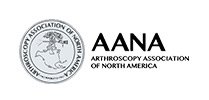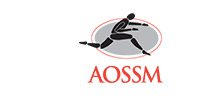Shoulder
Shoulder Labral Injuries
The shoulder joint is a "ball and socket" joint that enables smooth gliding and thereby the movements of arms. However, it is inherently unstable because of the shallow socket. A soft rim of cartilage, the labrum, lines the socket and deepens it so that it accommodates the head of the upper arm bone better.
Find out more about Shoulder Labral Injuries, click on below tab
Shoulder Instability
Shoulder instability is a chronic condition that causes frequent dislocations of the shoulder joint. A dislocation occurs when the end of the humerus (the ball portion) partially or completely dislocates from the glenoid (the socket portion) of the shoulder. A partial dislocation is referred to as a subluxation, whereas a complete separation is referred to as a dislocation.
Find out more about Shoulder Instability, click on below tab
Rotator Cuff Tear
The rotator cuff is a group of tendons in the shoulder joint that cover and provide support to the shoulder joint, enabling wider range of motion. A tear in the rotator cuff is one of the most common causes of shoulder pain in middle aged adults and older individuals. It may occur with repetitive movements while working or playing sports, during motor accidents, lifting a heavy object or a fall on an outstretched arm. As aging occurs, bone spurs may develop and can damage tendon tissue causing tears.
Find out more about Rotator Cuff Tear, click on below tabs
Frozen Shoulder
Frozen shoulder is the condition of painful shoulder limiting the movements because of pain and inflammation. It is also called as adhesive capsulitis and may progress to the state where an individual may find it difficult to move the shoulder. It is more common in older adults aged between 40 and 60 years and is more common in women than men.
Find out more about Frozen Shoulder, click on below tabs
Shoulder Impingement
Various supporting structures aid in the smooth movement of the shoulder joint. The joint is held together and stabilized by a group of tendons called the rotator cuff. A fluid-filled sac called a bursa, located above the rotator cuff, helps in the frictionless movement of the shoulder. Shoulder impingement is one of the most common causes of pain in the adult shoulder.
Find out more about Shoulder Impingement, click on below tabs
Clavicle Fracture
Clavicle fracture or broken collarbone is a very common injury associated with contact sports such as football and martial arts, as well as impact sports such as motor racing. A direct blow over the shoulder, fall on an outstretched arm or motor vehicle accident may also cause the clavicle bone to break. A broken clavicle causes difficulty in lifting your arm because of pain, swelling and bruising.
Find out more about Clavicle Fracture, click on below tab
Shoulder Arthroscopy
Arthroscopy is a minimally invasive diagnostic and surgical procedure performed for joint problems. Shoulder arthroscopy is performed using a pencil-sized instrument called an Arthroscope. The arthroscope consists of a light system and camera to project images to a computer screen for your surgeon to view the surgical site. Arthroscopy is used to treat disease conditions and injuries involving the bones, cartilage, tendons, ligaments, and muscles of the shoulder joint.
Find out more about Shoulder Arthroscopy, click on below tabs
Shoulder Joint Replacement
The shoulder is a highly movable body joint that allows various movements of the arm. It is a ball and socket joint, where the head of the humerus (upper arm bone) articulates with the socket of the scapula (shoulder blade) called the glenoid. The two articulating surfaces of the bones are covered with cartilage, which prevents friction between the moving bones. The cartilage is lubricated by synovial fluid. Tendons and ligaments around the shoulder joint provide strength and stability to the joint.
Find out more about Shoulder Joint Replacement, click on below tabs
Arthroscopic Rotator Cuff Repair
Rotator cuff is the group of tendons in the shoulder joint providing support and enabling wider range of motion. Major injury to these tendons may result in tear of these tendons and the condition is called as rotator cuff tear. It is one of the most common causes of shoulder pain in middle-aged adults and older individuals.
Find out more about Arthroscopic Rotator Cuff Repair, click on below tab
Shoulder Labral Repair
Labrum repair is a surgical technique recommended for treating labrum tear. Labrum is a triangular, fibrous, rigid cartilage structure lining the ball-and-socket joint of the shoulder. It provides cushioning support to these two joints. It also deepens the socket and helps to stabilize the joint.
Find out more about Shoulder Labral Repair, click on below tab
Bankart Tear & Repair
The shoulder joint (glenohumeral joint) is a ball and socket joint, where the head of the upper arm bone (humerus) attaches to the shoulder socket (glenoid cavity). The shoulder socket is extremely shallow and therefore needs additional support to keep the shoulder bones from dislocating.
Find out more about Bankart Tear & Repair, click on below tab
SAD
Subacromial decompression is a surgery that is performed for the treatment of impingement syndrome which causes pain, reduced range of motion, and loss of strength in the shoulder. The surgery is performed to create more space for the rotator cuff by surgical removal of the inflamed portion of the bursa and/or part of the acromion which are bones that form part of the shoulder joint.
Mumford
The Mumford procedure is a surgery performed to treat shoulder pain by the removal of a part of the collar bone(clavicle). It is also known as distal clavicle resection. The surgery is usually performed when bony protrusions (bone spurs) develop on the clavicle probably due to a significant stress placed on the joint with activities such as weight lifting.
Biceps Tenodesis
Biceps tenodesis is a surgery performed to repair a partial or fully torn long head of the biceps tendon. The procedure involves detaching the tendon from the shoulder and reattaching it to the long bone of the arm just below the shoulder.
Click on the topics below to find out more from the Orthopedic connection website of American Academy of Orthopaedic Surgeons.






